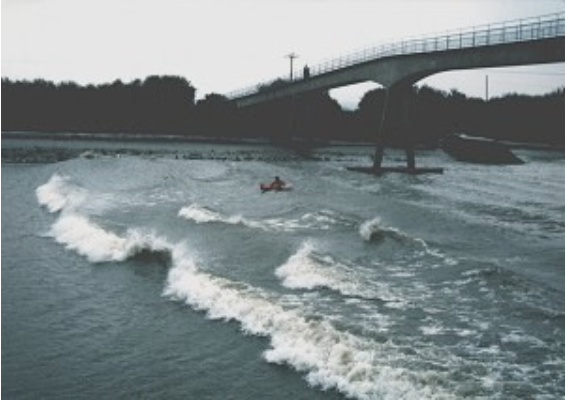
Tidal Bores
In most tidal rivers the change from ebb to flood is gradual: the ebb current downstream slows, there is a period of slack water, then slowly the flood tide starts flowing upstream. In a few rivers, the behaviour is remarkably different and the onset of the flood tide is marked by a distinct, sometimes very vigorous wave – a bore.
Of the one hundred or so rivers around the world known to produce bores, around a fifth of these are in the United Kingdom. This is a consequence of high tidal ranges occurring in several locations around the British Isles – three rivers with notable bores are the Severn, Dee and Mersey.
Tidal bores on the Dee
Two north-west rivers that produce bores are the Dee and the Mersey. They are at their best when very high tides are expected above 10m at Liverpool, which occurs on only a few days each year. However lower tides can produce good bores if other factors are favourable such as a period of dry weather reducing fresh water flow in the rivers.
The Dee Bore may be seen at the old road bridge at Queensferry about two hours before High Water Liverpool (HWL). It arrives at the Saltney Ferry footbridge about one and a half hours before HWL and then takes a further half-hour to arrive, somewhat reduced, at Chester.
Tips for observers of tidal bores
- It is better to arrive half an hour too early than a minute too late – rainfall, wind and other factors affect the time of arrival of the bore; its appearance cannot be predicted with certainty.
- Bores can disappoint, because of various factors, even if the predicted tide is very high
- If you can go a number of times you will have a better chance of seeing something quite awe inspiring.